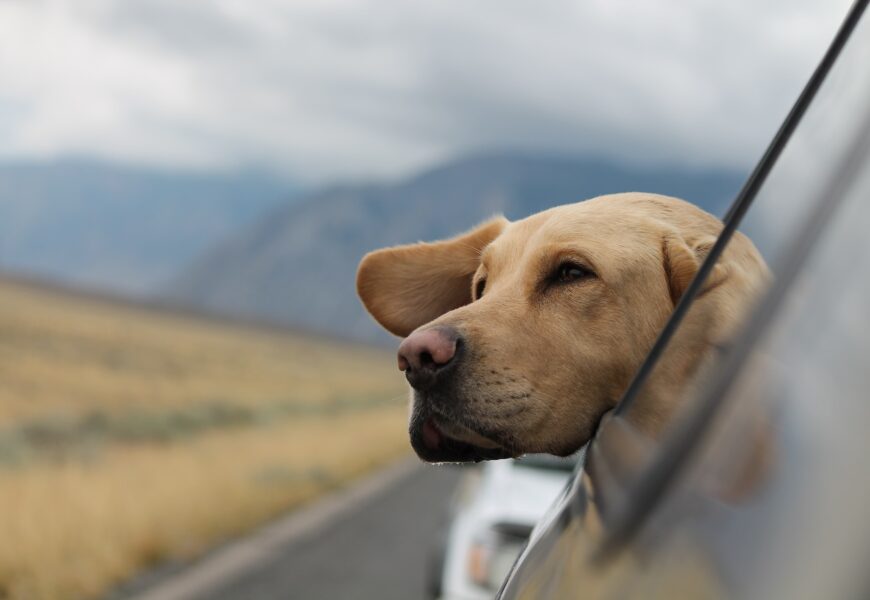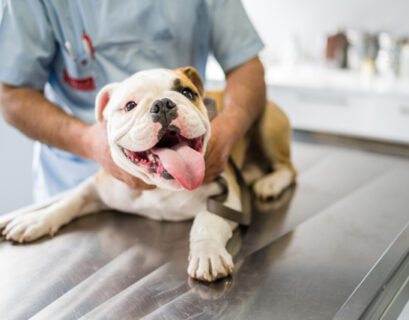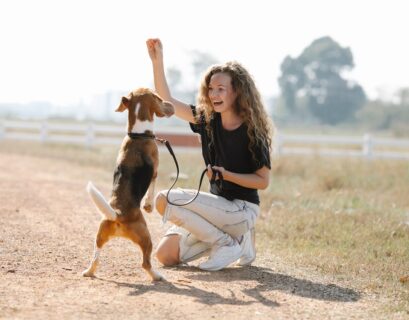“Embark on Unforgettable Adventures with Your Furry Friend: Unveiling the Secrets to a Smooth and Enjoyable Journey!”
Key Takeaways:
- Traveling with pets is a joyful experience that strengthens our bond with our furry companions.
- A thorough plan ensures a smooth journey; consider pet health and suitability for travel.
- Understand the destination’s import regulations, quarantine rules, and pet policies.
- Prepare necessary documents like pet passports, health certificates, and vaccination records.
- Manage pet anxiety with early familiarization and calming techniques.
- Explore pet-friendly activities and destinations for enriching experiences.
- Practice responsible pet etiquette, including leash rules and waste management.
- Be prepared for emergencies with a pet first aid kit and knowledge of nearby veterinary clinics.
- Help pets adjust post-travel and cherish memories with a pet travel journal.
As the sun rises over the horizon, casting a warm glow on a new day of adventure, you can’t help but feel an overwhelming sense of excitement. Today is no ordinary day; it’s filled with the promise of exploration and companionship as you embark on a journey like no other—with your beloved pet by your side. Many people adore traveling with their pets, which makes sense. The unbridled enthusiasm in their eyes, the soft purrs, or the gentle wag of their tail—these simple gestures can fill our hearts with immense joy and create unforgettable memories.
However, an essential aspect must always be noticed amidst the thrill of pet travel: preparation. As we plan meticulously for our adventures, our furry companions deserve the same attention and care when venturing into the world with us. Ensuring a smooth and enjoyable journey for our pets is a matter of their comfort and well-being and crucial for the seamless flow of our travel plans.
Traveling with Pets: A Comprehensive Guide to Pre-Travel Planning
Traveling with our furry companions is an experience that ignites a unique sense of joy and adventure. The mere thought of exploring new places with our pets beside us fills our hearts with excitement. However, meticulous pre-travel planning is essential to ensure a smooth and enjoyable journey for both us and our beloved furry friends. This comprehensive guide will take you through the crucial steps of pre-travel preparation, from assessing your pet’s suitability for travel to understanding airline policies and regulations. Whether you’re embarking on a road trip, taking to the skies, or venturing with exotic or large animals, let’s delve into pet travel confidently, making cherished memories that last a lifetime.
Pre-Travel Planning
A. Assessing Your Pet’s Suitability for Travel
Before packing the bags and leashing up your pet for the journey, it’s vital to determine whether they are suited for travel. Every pet is unique, and some may thrive in new environments, while others might find it stressful. Two key factors to consider are:
1. Health Considerations: Your pet’s well-being is of utmost importance. Schedule a visit to the veterinarian for a thorough health checkup. Ensure that your pet is up-to-date with vaccinations and free from any underlying health issues that could be exacerbated during travel.
2. Temperament and Behavior: Evaluate your pet’s temperament and behavior. Some pets are more adaptable and relaxed, making them ideal travel companions, while others might get anxious or fearful in unfamiliar settings. Understanding your pet’s temperament will help you prepare and plan for their comfort and happiness during the journey.
B. Researching Pet-Friendly Destinations and Accommodations
Not all destinations and accommodations are pet-friendly, and it’s crucial to research in advance to ensure a stress-free trip for both you and your furry friend.
1. Pet-Friendly Hotels and Rentals: Look for hotels, motels, or vacation rentals that welcome pets. Many establishments now offer pet-friendly amenities, such as pet beds, food bowls, and special treats, making your pet feel at home.
2. Pet Policies at Tourist Attractions: Research the pet policies of tourist attractions you plan to visit. While some places may welcome pets on leashes, others might have restrictions. Knowing these rules will help you plan your itinerary and avoid last-minute disappointments.
C. Visit the Veterinarian
A visit to the veterinarian is a crucial step in ensuring your pet is fit for travel and meets all necessary requirements.
1. Health Check and Vaccinations: Schedule an appointment with your veterinarian for a thorough health check. Ensure your pet is up-to-date with vaccinations, as some destinations may have specific requirements for entry.
2. Obtaining Necessary Health Certificates: Health certificates issued by the veterinarian may be mandatory for certain travels, especially international ones. These certificates verify your pet’s good health and vaccination status, providing essential documentation for travel authorities.
With these preliminary steps completed, you can embark on a smooth and enjoyable journey with your furry companion. Whether your adventures involve air travel, road trips, or the unique challenges of traveling with exotic or large animals, let’s explore each aspect carefully and consider creating lasting memories together.
Traveling by Air with Pets
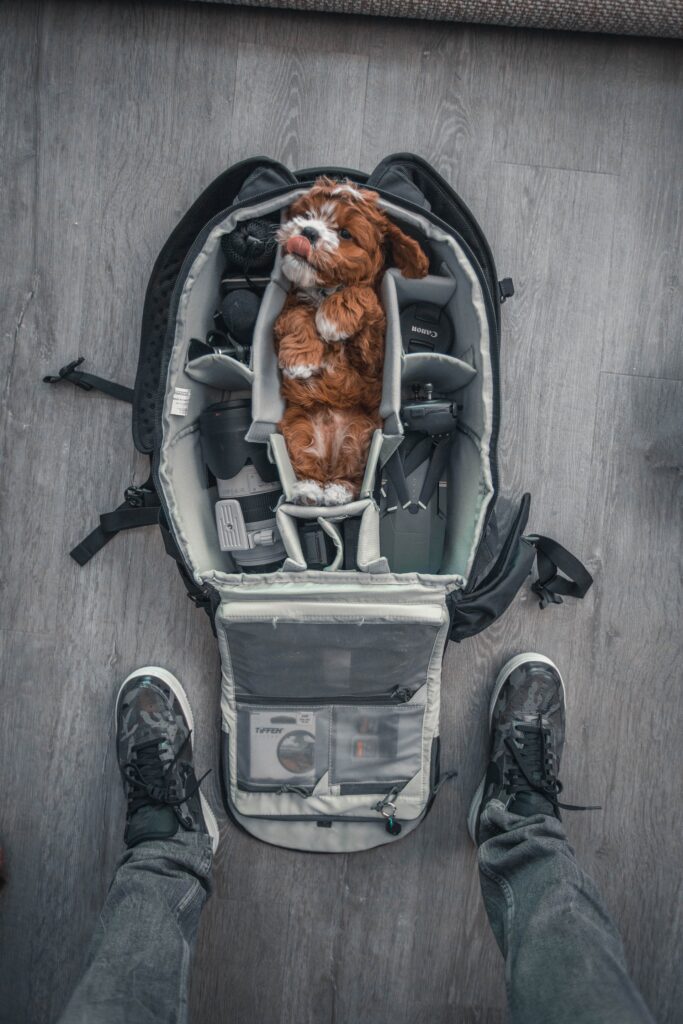
Air travel with pets can be a convenient and efficient way to reach your destination. Still, it requires careful planning and adherence to airline regulations to ensure your pet’s safety and comfort.
A. Understanding Airline Pet Policies and Regulations
Each airline has its pet policies and regulations, so it’s crucial to research and familiarize yourself with them before booking your flight.
1. Pet Size and Breed Restrictions: Airlines typically have specific size and breed restrictions for pets traveling in the cabin. Smaller pets may be allowed in the cabin under the seat in an airline-approved carrier, while larger pets may need to travel in the cargo hold.
2. Crate Requirements and Specifications: If your pet travels in the cargo hold, you must use an airline-approved pet crate that meets specific size and ventilation requirements. Ensuring the crate is sturdy and comfortable for your pet is essential.
B. Choosing the Right Pet Carrier
Selecting the right pet carrier is essential for your pet’s safety and well-being during the flight.
1. Size and Comfort: The carrier should be the right size for your pet to stand, turn around, and lie comfortably. Additionally, provide soft and familiar bedding to help them feel secure.
2. Airline-Approved Carriers: Ensure your chosen carrier complies with the airline’s regulations. Avoid surprises at the airport by confirming that your carrier meets all the requirements.
C. Preparing Your Pet for Air Travel
Help your pet acclimate to the travel experience to reduce stress and anxiety.
1. Gradual Crate Familiarization: Introduce your pet to the carrier gradually before the trip. Allow them to explore and associate the carrier with positive experiences, such as treats or playtime.
2. Practice Car Rides and Crate Time: If your pet is not used to car rides or spending time in a crate, practice short trips and crate time to help them get accustomed to the experience.
D. Tips for Smooth Security Checks and Boarding
Navigating airport security and boarding with your pet requires preparation and patience.
1. Arriving Early: Arrive at the airport well in advance to allow extra time for security checks and paperwork associated with pet travel.
2. Keeping Your Pet Calm and Relaxed: During security checks and boarding, maintain a calm demeanor and comfort your pet. Familiar toys or treats can help distract and soothe them.
Traveling by air with your pet can be a rewarding experience, but it’s essential to prioritize their well-being throughout the journey. Understanding the airline’s policies, selecting the right carrier, and preparing your pet for the experience will ensure a smoother and less stressful trip for both of you.
Road Trips with Pets
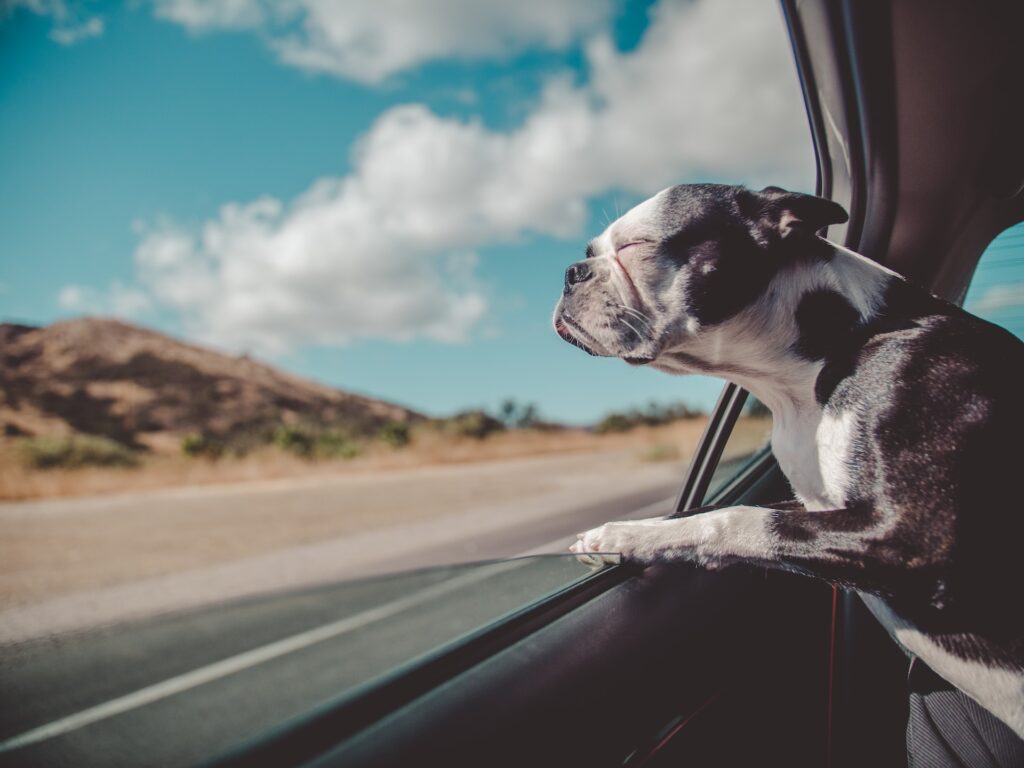
Hitting the open road with your pet is an adventure like no other. Road trips offer the flexibility to explore various destinations while enjoying the company of your furry companion. However, ensuring your pet’s safety and comfort during the journey requires careful planning and consideration.
A. Pet Safety in the Car
Keeping your pet safe while traveling in the car is paramount to a successful road trip.
1. Using Pet Seat Belts and Carriers: Just like humans, pets should be secured with seat belts or travel in appropriate carriers to prevent injury in case of sudden stops or accidents.
2. Securing the Crate or Carrier: If your pet travels in a crate or carrier, ensure it is securely fastened to prevent it from shifting.
B. Frequent Breaks and Hydration
Long road trips necessitate regular breaks for your pet to stretch their legs and hydrate.
1. Planning Pet-Friendly Rest Stops: Research and plan your route to include pet-friendly rest stops where your pet can walk, exercise, and relieve themselves.
2. Offering Water and Bathroom Breaks: Keep a fresh water supply and offer regular bathroom breaks to ensure your pet stays hydrated and comfortable.
C. Preparing Your Pet for Car Rides
Some pets may feel anxious or uncomfortable during car rides, so preparation is key.
1. Short Practice Drives: If your pet is not accustomed to car rides, take short practice drives to get them used to the sensation and associate it with positive experiences.
2. Packing Familiar Toys and Blankets: Bring your pet’s favorite toys and blankets to provide comfort and familiarity during the journey.
D. Ensuring Pet Comfort during the Journey
Maintaining a comfortable environment for your pet throughout the road trip is essential for their well-being.
1. Proper Ventilation and Temperature: Ensure your car is well-ventilated and the temperature is suitable for your pet’s comfort. Avoid leaving them alone in the car on hot days.
2. Avoid Leaving Pets Unattended in the Car: Never leave your pet unattended, especially during warm weather, as it can quickly become dangerously hot.
Traveling by car allows you to explore at your own pace, and with proper planning and attention to your pet’s needs, it can be an unforgettable adventure for both of you. The next part of this guide will focus on traveling with exotic pets or large animals, bringing insight into unique considerations and challenges when journeying with these special companions.
Traveling with Exotic Pets or Large Animals

While most pets are of the canine or feline variety, some adventurous souls opt for the companionship of exotic pets or large animals. Traveling with these extraordinary creatures requires additional considerations and preparations to ensure their safety and well-being.
A. Special Considerations for Exotic Pets
Exotic pets, such as reptiles, birds, or small mammals, have specific needs that must be catered to during travel.
1. Researching Legal Restrictions: Different jurisdictions have varying regulations regarding the ownership and transportation of exotic pets. Before embarking on a trip, thoroughly research the laws and regulations of your destination to avoid any legal complications.
2. Ensuring Proper Care During Travel: Exotic pets often have unique dietary, environmental, and temperature requirements. Be sure to bring their familiar food, bedding, and other essentials to maintain a comfortable environment during the journey.
B. Permit Requirements for Exotic Pets
Traveling with exotic pets may necessitate obtaining permits or special documentation.
1. Obtaining Necessary Permits and Documentation: Contact the appropriate authorities to acquire any required permits or health certificates for your exotic pet. These documents may be necessary for crossing international borders or traveling to specific regions.
2. Adhering to Import and Export Regulations: If you travel internationally with an exotic pet, be aware of the import and export regulations of both your home country and your destination. Failure to comply with these regulations may lead to confiscation or denial of entry.
C. Large Animal Transport: Challenges and Solutions
For those with large animals, such as horses or livestock, traveling presents a unique set of challenges that must be addressed for a smooth journey.
1. Hiring Professional Animal Transport Services: Transporting large animals requires specialized equipment and expertise. Consider hiring professional animal transport services to ensure your animal’s safety and comfort throughout the journey.
2. Ensuring Safety and Comfort for Large Animals: Provide ample space, proper ventilation, and secure restraints to ensure your large animal feels secure and at ease during transit.
Traveling with exotic pets or large animals can be an incredible adventure, but it requires careful planning and attention to detail to accommodate their unique needs. With the necessary permits and documentation and all their essentials packed, you and your extraordinary companion are ready to embark on an unforgettable journey.
International Pet Travel: A Guide to Global Adventures with Your Furry Companion

The allure of international travel knows no bounds, and for pet owners, exploring foreign lands with their beloved furry friends by their side is an enticing prospect. Whether planning a thrilling escapade to a distant continent or a relaxing getaway to a neighboring country, international pet travel requires meticulous preparation to ensure a smooth and stress-free journey for you and your four-legged companion.
In this comprehensive guide to international pet travel, we’ll delve into the intricacies of crossing borders with your pet. From researching import regulations and quarantine rules to preparing essential travel documents, we leave no stone unturned in helping you navigate the world of global adventures with your furry friend. Together, we’ll discover the secrets to a stress-free customs process and familiarize your pet with the unique challenges of international travel.
So, fasten your seatbelts and get ready for a whirlwind tour of international pet travel, unlocking the wonders of exploring pet-friendly activities, practicing responsible pet etiquette, and ensuring emergency preparedness for any unforeseen circumstances. And as the journey ends, we’ll explore post-travel considerations, including helping your pet adjust to new environments and capturing cherished memories in a pet travel journal.
Researching Import Regulations and Quarantine Rules
Before embarking on an international adventure with your pet, you must familiarize yourself with your destination country’s import regulations and quarantine rules.
1. Country-Specific Requirements: Each country has unique pet import requirements, including specific health certifications, vaccinations, and microchipping. Research and understand these regulations well to ensure a smooth entry for your furry companion.
2. Quarantine Periods and Facilities: Some countries may have quarantine requirements for incoming pets to prevent the spread of diseases. Know the duration of quarantine, if applicable, and inquire about the conditions and facilities where your pet will stay during this period.
Preparing Your Pet’s Travel Documents
Proper documentation is crucial for international pet travel. Ensure you have all the necessary paperwork ready before embarking on your journey.
1. Pet Passports and ID Tags: Many countries recognize pet passports as standardized documentation of your pet’s identity, vaccination history, and health status. Additionally, ensure your pet wears a secure and legible ID tag with your contact information.
2. Health Certificates and Vaccination Records: Obtain a health certificate from your veterinarian confirming that your pet is healthy and fit for travel. Additionally, bring up-to-date vaccination records in case customs officers ask for them.
Ensuring a Stress-Free Customs Process
Navigating customs with your pet can be a breeze with a little preparation and awareness.
1. Minimizing Travel Time and Layovers: Opt for direct flights whenever possible to minimize travel time and reduce stress on your pet. Long layovers or multiple flights can be overwhelming for animals.
2. Familiarizing Your Pet with International Travel: If your pet is not accustomed to long flights or being in transit, gradually introduce them to the travel experience. Short trips and crate training can help your pet acclimate to the challenges of international travel.
International pet travel is a thrilling opportunity to create lifelong memories with your furry companion, exploring new cultures and landscapes together. However, it requires thorough preparation, adherence to regulations, and mindful consideration of your pet’s needs throughout the journey. The next section will address the vital topic of managing pet anxiety and stress, ensuring your pet remains calm and content during their global adventures.
Managing Pet Anxiety and Stress
Traveling can be an exciting experience, but it may also trigger anxiety and stress for some pets. As their caretakers, it’s essential to prioritize their well-being and ensure they feel safe and comfortable throughout the journey.
A. Familiarizing Your Pet with the Travel Gear
Introducing your pet to the travel gear well in advance can help alleviate anxiety and create positive associations with the journey.
1. Introducing the Crate or Carrier Early: If your pet travels in a crate or carrier, start the familiarization process early. Gradually introduce them to the carrier, allowing them to explore and associate it with positive experiences, such as treats or toys.
2. Making It a Safe and Comfortable Space: Line the crate or carrier with soft bedding and include familiar items, like their favorite blanket or toy, to create a sense of security and comfort.
B. Using Calming Products and Techniques
In some cases, pets may benefit from using natural calming remedies or professional guidance.
1. Natural Calming Remedies: Some pets may respond well to natural calming remedies like lavender-infused bedding or pheromone sprays. These products can help reduce anxiety and promote relaxation during travel.
2. Consultation with a Veterinarian: If your pet experiences severe anxiety during travel, consult your veterinarian. They can recommend suitable calming products or discuss the possibility of short-term medications to ease their stress.
C. Seeking Professional Advice for Anxious Pets
For pets with significant travel anxiety, seeking professional guidance can make a difference.
1. Professional Animal Behaviorists: Certified animal behaviorists can help identify the root causes of your pet’s anxiety and create tailored plans to address their specific needs.
2. Pet Trainers Specializing in Travel Anxiety: If your pet’s anxiety is travel-specific, consider working with a pet trainer specializing in travel-related issues. They can assist in acclimating your pet to the travel environment.
International pet travel can be a rewarding experience, but it’s essential to prioritize your pet’s mental well-being. Familiarizing them with the travel gear, using calming products and techniques, and seeking professional advice when necessary will help them feel secure and content during their global adventures.
Pet-Friendly Activities and Destinations
Exploring new destinations with your pet can be a delightful experience, but it requires knowledge of pet-friendly places and proper pet etiquette.
A. Exploring Pet-Friendly Parks and Beaches
Many destinations offer pet-friendly outdoor spaces for your furry friend to roam and play.
1. Researching Pet-Friendly Outdoor Spaces: Before visiting a park or beach, check for pet-friendly designations, rules, and any leash requirements to ensure a positive experience for everyone.
2. Following Leash and Cleanup Rules: Always keep your pet on a leash where required, and be a responsible pet owner by cleaning up after them.
B. Finding Pet-Friendly Restaurants and Cafes
Sharing a meal with your pet can be a heartwarming experience, provided you visit pet-welcoming establishments.
1. Identifying Pet-Welcoming Establishments: Look for restaurants and cafes that openly welcome pets. Call ahead to confirm their pet policy and seating availability.
2. Etiquette for Dining with Pets: Ensure your pet is well-behaved and does not disturb other patrons. Bring along a water bowl to keep them hydrated while dining.
C. Engaging in Pet-Oriented Tours and Activities
Discovering pet-oriented tours and activities can add a touch of excitement to your travel itinerary.
1. Pet-Friendly Tours and Excursions: Seek out tours and excursions that allow pets to join in on the fun. From boat rides to walking tours, there are numerous ways to explore the world with your furry companion.
2. Outdoor Activities Suited for Pets: Consider hiking trails, pet-friendly nature walks, or even pet-friendly boat trips to enrich your pet’s experiences.
By researching and engaging in pet-friendly activities and destinations, you can create unforgettable memories with your furry friend while respecting local regulations and customs.
Pet Etiquette and Responsibility
Being a responsible pet owner when traveling ensures your pet’s well-being and fosters positive relationships with other travelers and locals.
A. Practicing Proper Pet Etiquette in Public Spaces
Respectful pet etiquette is essential, whether you’re visiting bustling cities or serene countryside.
1. Leash Rules and Cleanup Etiquette: Adhere to leash laws and promptly clean up after your pet. Carrying waste bags and containers is a must.
2. Respecting Other Travelers and Locals: Be mindful of others’ personal space and comfort around pets. Not everyone may be comfortable with animals, so respecting their boundaries is crucial.
B. Cleaning Up After Your Pet: Waste Management
Keeping public spaces clean is a shared responsibility for all pet owners.
1. Carrying Waste Bags and Containers: Always carry waste bags or containers to pick up after your pet, whether on a city street or in a natural setting.
2. Disposing of Waste Properly: Dispose of pet waste in designated trash receptacles, avoiding littering and contamination of the environment.
C. Respectful Behavior towards Other Travelers
Courtesy and consideration go a long way when traveling with pets.
1. Avoiding Intrusion on Others’ Space: Be mindful of your pet’s behavior around others, avoiding intrusion or excessive attention-seeking.
2. Being Mindful of Allergies and Fears: Some individuals may have allergies or fears of animals. Respect their needs by keeping your pet at a distance, if necessary.
Being a considerate and responsible pet owner makes for a smoother travel experience and reflects positively on the pet-friendly travel community as a whole.
Emergency Preparedness
Preparing for unforeseen circumstances is a vital aspect of responsible pet ownership.
A. Carrying a Pet First Aid Kit
A well-equipped pet first aid kit can be a lifesaver in emergencies.
1. Essential Items for the Kit: The first aid kit should include gauze, adhesive bandages, antiseptic wipes, tweezers, and any necessary medications.
2. Knowing Basic Pet First Aid Procedures: Familiarize yourself with basic pet first aid procedures, such as treating cuts, bites, and other minor injuries.
B. Locating Nearby Veterinary Hospitals
Knowing the location of nearby veterinary hospitals can be invaluable during emergencies.
1. Researching Veterinary Clinics in Your Travel Area: Before departing, research veterinary clinics or animal hospitals in your visiting areas.
2. Saving Emergency Contact Information: Save the contact information of these clinics and the nearest emergency veterinary hospital in your phone or travel documents.
C. Planning for Unexpected Changes in Travel Itinerary
Flexibility and preparedness are essential when traveling with pets.
1. Having Backup Accommodations for Pets: Have a backup plan for pet-friendly accommodations in case of changes in your travel itinerary.
2. Being Prepared for Unforeseen Circumstances: Travel can be unpredictable, so be prepared to adapt to unexpected situations with your pet’s well-being in mind.
By taking these precautionary measures, you can travel confidently, knowing you are well-prepared to handle any unforeseen challenges.
Post-Travel Considerations
As you return from your adventures, you must help your pet transition back to their everyday routine.
A. Helping Pets Adjust to a New Environment
Pets may experience some adjustment challenges after returning home.
1. Familiarizing Pets with the New Space Gradually: Allow your pet time to reacquaint their home environment. Give them space to explore and feel comfortable.
2. Maintaining Familiar Routines: Stick to your pet’s regular feeding, exercise, and sleep routines to stabilize the transition.
B. Monitoring Pet Health after Travel
Observe your pet closely after travel to ensure their well-being.
1. Observing Changes in Behavior or Health: Look out for changes in your pet’s behavior, appetite, or energy levels, which could indicate stress or health issues.
2. Seeking Veterinary Care if Necessary: If you notice any concerning signs or symptoms, seek prompt veterinary care to address potential health concerns.
C. Capturing Memorable Moments: Pet Travel Journal
Preserve the memories of your adventures together in a pet travel journal.
1. Documenting Your Pet’s Travel Experiences: Record your pet’s journey through photos, videos, or written reflections. This journal will become a cherished memento of your travels together.
2. Creating Lasting Memories with Your Furry Friend: Celebrate the special moments you shared with your pet during your international escapades, immortalizing them in your pet travel journal.
International pet travel is an enriching experience that fosters a deeper bond between you and your beloved companion. You can make the most of your global adventures by adhering to responsible pet etiquette, prioritizing your pet’s well-being, and staying prepared for emergencies. Whether you’re exploring pet-friendly parks, savoring pet-welcoming cafes, or hiking scenic trails together, cherish these precious moments, creating a treasure trove of memories that will last a lifetime.
Conclusion
As the sun sets on our travel adventures with our furry companions, we are left with hearts filled with joy and memories that will forever hold a special place in our souls. The joy of traveling with pets is a unique and precious experience that transcends words. From the excited wag of a tail on a road trip to the content purrs of a cat on an international flight, our pets bring immeasurable happiness to our journeys. The unwavering loyalty, boundless love, and unwavering presence of our beloved furry friends add a layer of magic to every destination we explore. Their playful spirit, curiosity, and zest for life inspire us to embrace the present moment and revel in the simple pleasures of each new adventure.
As we ventured into the world with our furry companions, we quickly learned that a smooth and enjoyable journey with pets requires thoughtful planning, preparation, and responsibility. From assessing our pet’s suitability for travel and researching pet-friendly destinations to obtaining necessary health certificates and understanding airline policies, every step of the process was an act of love and dedication to our pet’s well-being. We familiarized them with the travel gear, eased their anxiety, and practiced responsible pet etiquette to ensure harmonious interactions with other travelers.
Through road trips that painted picturesque landscapes, air travel that transcended borders, and explorations of pet-friendly destinations, we shared unforgettable experiences with our pets. Together, we hiked through breathtaking nature trails, dined at pet-friendly cafes, and played on sandy beaches, creating a tapestry of cherished memories woven with the threads of companionship and adventure.
The discovery was that international pet travel was not merely about crossing borders; it was about crossing barriers, transcending differences, and realizing that love knows no bounds or boundaries. Our pets became more than just our companions; they became our fellow travelers, confidants, and sources of courage and comfort during uncertain times.
It was found that traveling with pets is not just about arriving at the destination; it is about embracing the journey itself. Every moment and every step taken with our beloved pets celebrates the bond we share, the memories we create, and the experiences that make life’s tapestry so vibrant and meaningful.
So, to all the fellow pet lovers out there, as you embark on your travel adventures with your furry companions, remember to embrace the joy, cherish the moments, and prioritize their well-being above all else. With love, care, and a sense of wonder, you and your furry friend are poised to embark on a lifetime of unforgettable journeys – ones filled with laughter, love, and the magic of traveling with pets. Bon voyage!

